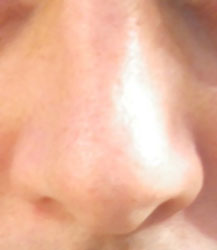
Researchers at the University of Colorado Denver, in the US, seeking to unravel the most ancient yet least understood of the five senses - smell - have discovered a previously unknown step in how odours are detected and processed by the brain.
The four year study, focusing on how mice respond to odours, showed that smells are picked up by the olfactory bulb - the first stop on the way to the brain - then sent to the olfactory cortex for further analysis.
However, scientists discovered something else - a dialogue between the bulb and the cortex conducted by rapidly firing nerve cells.
"It was originally thought that the olfactory bulb filtered and the olfactory cortex made decisions on whether something is, for example, edible," said lead researcher Diego Restrepo, professor of Cell and Developmental Biology and co-director of the University of Colorado School of Medicine Centre for NeuroScience. "Our study says it's not quite like that. You process information on reward in the olfactory bulb, send it to the cortex and there is a dialogue between the two. Then the brain will act."
The study was published March 24 in the science journal Neuron.
Restrepo, an expert on the science of taste and smell, said the discovery expands our understanding of how the olfactory system filters and categorizes the thousands of odours that bombard the brain daily.
"We know very little about olfaction and we tend to think that it is not very important in humans compared to the other creatures," he said. "But much of what goes on is subtle and we are only beginning to understand it."
For example, scientists recently found that when men sniffed the odourless tears of women, their levels of testosterone dropped. Moreover, for years it's been known that humans, like animals, secrete pheromones that may subconsciously help them choose a mate.
However, unlike hearing, taste, sight and touch - smell is the only sense not processed exclusively through the thalamus in the brain, Restrepo said. Therefore, the exact path odours take to the brain and how they can trigger often vivid reactions is still not fully understood. The new research suggests that perhaps part of the answer lies within the dialogue between olfactory bulb and cortex.
In describing their work, the researchers noted that "olfaction is a primitive sensory system connected to the brain in a fundamentally different way from other systems."
"Decision-making in olfaction is challenging with a large number of input dimensions and hundreds of olfactory receptors," they wrote. "We show that information about what odours predict is integrated into the earliest stages of neural encoding compared to other senses."
Along with Restrepo, researchers contributing to the study include Wilder Doucette, MD, David Gire, PhD, and neuroscience graduate students Jennifer Whitesell and Vanessa Carmean of the University of Colorado School of Medicine. Mary T. Lucero, professor of Physiology at the University of Utah in Salt Lake City, also took part.
Faculty at the University of Colorado Denver's School of Medicine work to advance science and improve care. These faculty members include physicians, educators and scientists at University of Colorado Hospital, The Children's Hospital, Denver Health, National Jewish Health, and the Denver Veterans Affairs Medical Centre. Degrees offered by the UC Denver School of Medicine include doctor of medicine, doctor of physical therapy, and masters of physician assistant studies. The School is located on the University of Colorado's Anschutz Medical Campus, one of four campuses in the University of Colorado system.
Source: University of Colorado Denver